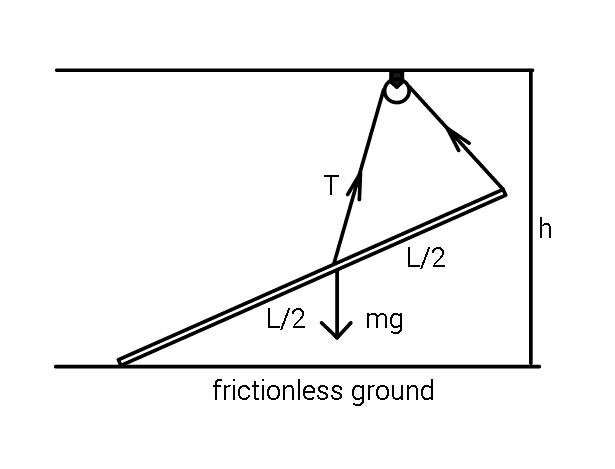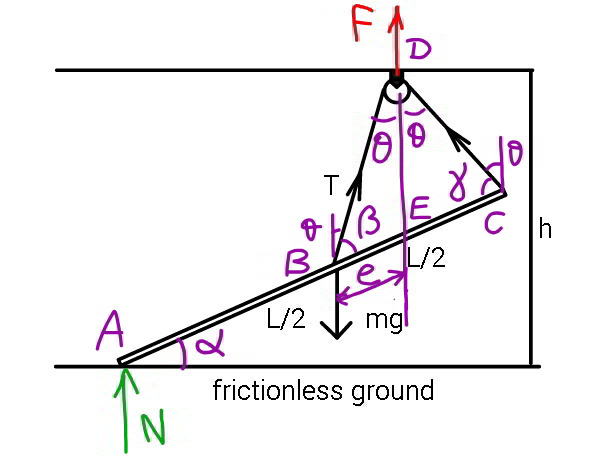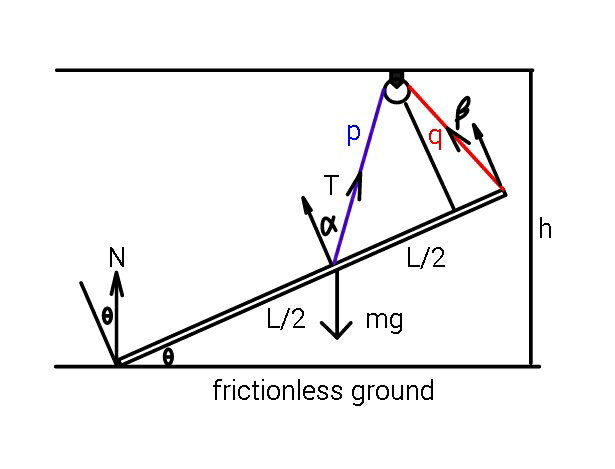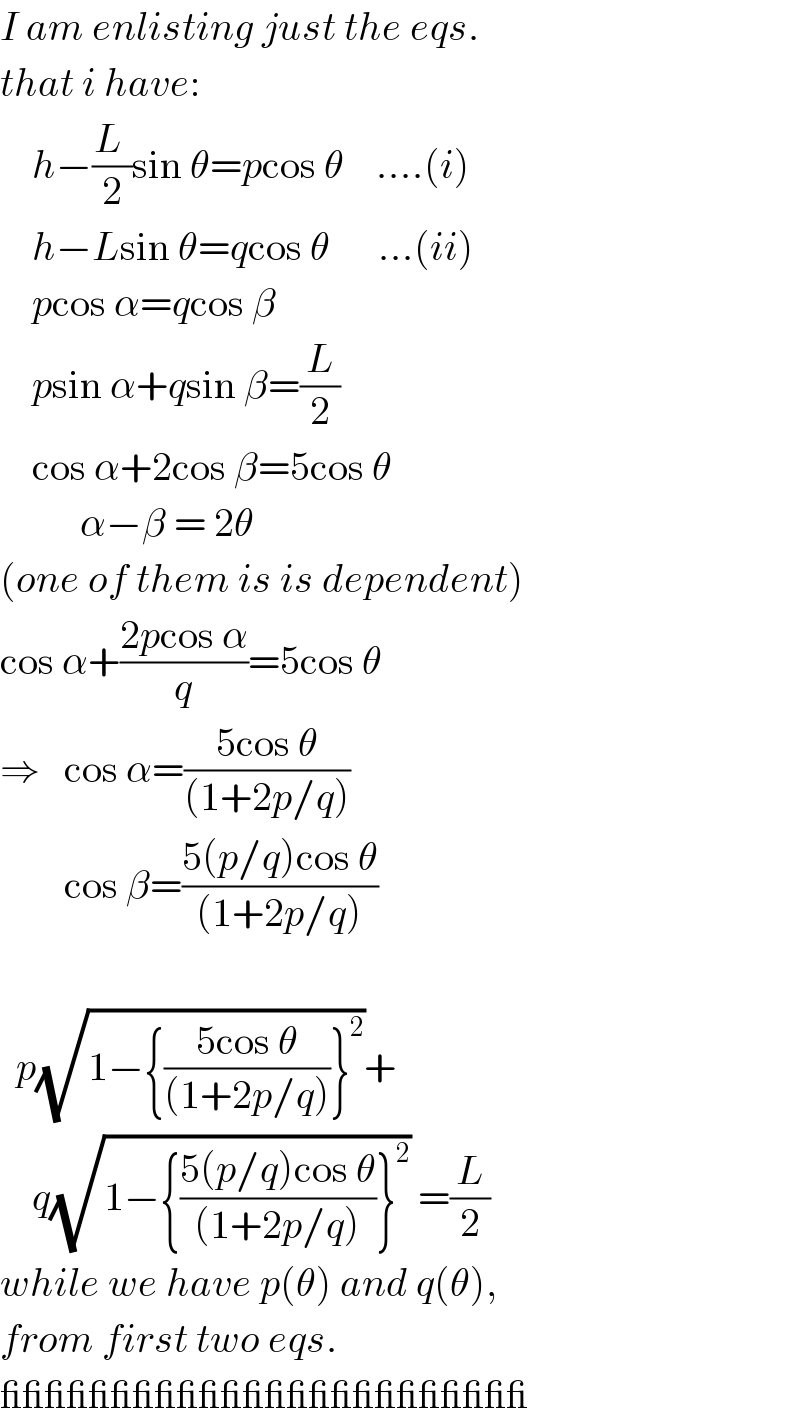
Question and Answers Forum
Question Number 81804 by ajfour last updated on 15/Feb/20

Commented by ajfour last updated on 15/Feb/20

Answered by mr W last updated on 15/Feb/20

Commented by mr W last updated on 16/Feb/20
![β+θ=(π/2)−α ⇒β=(π/2)−(θ+α) γ+θ=(π/2)+α ⇒γ=(π/2)−(θ−α) ((BD)/(sin γ))=((DC)/(sin β))=((BC)/(sin 2θ)) BD=((L sin γ)/(2 sin 2θ))=((L cos (θ−α))/(2 sin 2θ)) DC=((L sin β)/(2 sin 2θ))=((L cos (θ+α))/(2 sin 2θ)) l=BD+DC=((L[cos (θ−α)+cos (θ+α)])/(2 sin 2θ)) ⇒l=((L cos α)/(2 sin θ)) ...(iii) BD sin θ=e cos α ((L cos (θ−α) sin θ)/(2 sin 2θ))=e cos α e=((L cos (θ−α))/(4 cos θ cos α))=(L/4)(1+tan θ tan α) let T=((mg)/τ) with τ=5 given F=2T cos θ F((L/2)+e)=mg×(L/2) ⇒3 cos θ+sin θ tan α=τ ...(i) ((L sin α)/2)+BD×cos θ=h 2 sin α+((cos (θ−α))/(sin θ))=((4h)/L) with η=(h/L) ⇒3 sin α+((cos α)/(tan θ))=4η ...(ii) from (i): (3/(√(9+tan^2 α))) cos θ+sin θ ((tan α)/(√(9+tan^2 α)))=(τ/(√(9+tan^2 α))) cos (θ−φ)=(τ/(√(9+tan^2 α))) with tan φ=((tan α)/3) ⇒θ=tan^(−1) (((tan α)/3))+cos^(−1) ((τ/(√(9+tan^2 α)))) put this into (ii) we can get α. with α and θ, we get the length of the string acc. to (iii): l=((L cos α)/(2 sin θ)). example: τ=((mg)/T)=3, η=(h/L)=(4/5)=0.80 ⇒α=39.6988° ⇒θ=30.9364° ⇒l=3.7416m =================== if string length l is given, find T=? from (iii) we get ((cos α)/(sin θ))=((2l)/L)=λ ⇒sin θ=((cos α)/λ) put this into (ii): 3 sin α+(√(λ^2 −cos^2 α))=4η (√(λ^2 −1+sin^2 α))=4η−3 sin α 8 sin^2 α−24η sin α+16η^2 +1−λ^2 =0 ⇒sin α=((6η−(√(2(2η^2 +λ^2 −1))))/4) with α and θ we can get from (i): τ=3 cos θ+sin θ tan α ⇒τ=(1/λ)(3(√(λ^2 −1+sin^2 α))+sin α) example: L=4m, h=3m, l=3m η=(h/L)=(3/4)=0.75, λ=((2l)/L)=(6/4)=1.5 sin α=((6η−(√(2(2η^2 +λ^2 −1))))/4)=0.580137 ⇒τ=2.905932 ⇒T=((mg)/τ)=0.344mg](Q81834.png)
Commented by ajfour last updated on 15/Feb/20

Commented by mr W last updated on 15/Feb/20

Commented by mr W last updated on 16/Feb/20

Answered by ajfour last updated on 15/Feb/20

Commented by ajfour last updated on 15/Feb/20

